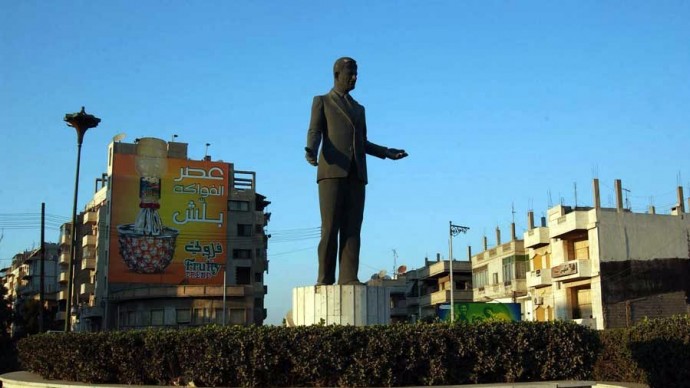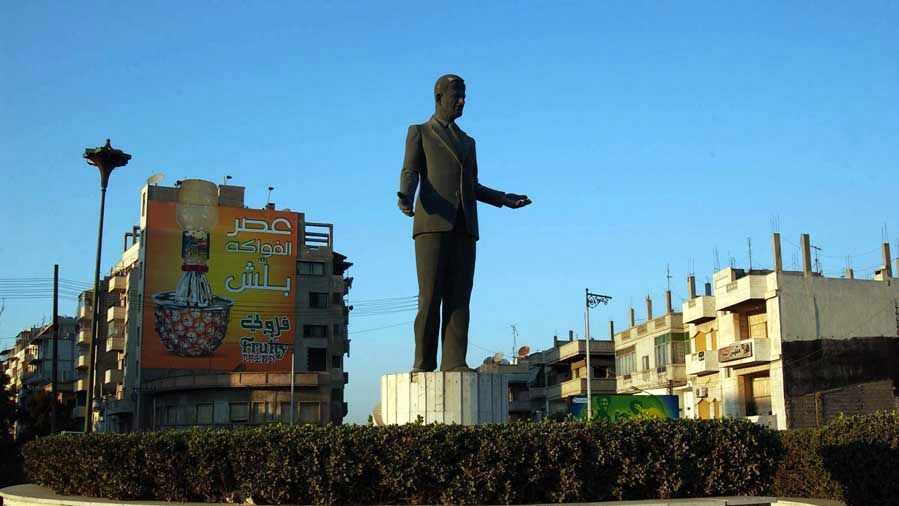
(MINNEAPOLIS) – Now that the world is focused on Syria, and the atrocities being committed by the government in Damascus, Many are asking why a country like Russia continues to remain adamant in it’s decision to stand behind the regime of Bashar al Assad.
Long before I had ever visited Syria, I had this romantic notion that the capital, Damascus, was this impeccably clean and beautiful city that stood apart from any other place in the Middle East. I imagined Damascus to have tree-lined boulevards; whitewashed Mediterranean style buildings; parks with fountains and manicured garden overflowing with fruit trees. I’m not sure how this vision of mine came about, but I can’t entirely rule out the accounts I read in early travelers’ books.
Unfortunately, my first encounter with Damascus was anything but romantic. In the late 1980s I was sent to Syria, by the news agency I was working for, to cover the release of western hostages being held by various extremist groups in Lebanon. At the time, Western governments, including the United States, were using Syria’s influence in Lebanon to try and secure the release of over a dozen captives. Syria, for its part was trying to shed its pariah image abroad, and was benefitting significantly from all the attention it was getting in the Western media. As a result the government allowed journalists entry into the country in condition that they only cover the hostages crisis and nothing else.
I arrived late one evening, on a flight from Switzerland, and was forced to wait hours in a tiny room, in a corner of the airport, staring at a small rectangular hole in the wall, the size of an envelope, for my passport to materialize. After what seemed like eternity my passport finally dropped out and I was ushered into the baggage area. After gathering my luggage, I proceeded through customs where I was pulled aside, yet again, to have all my gear methodically scrutinized and documented. By the time I got out of the airport the sun was already well up in the sky.
The whole experience reminded me of my visits to East Germany, Bulgaria and Romania, during the time of the Soviet Union, when every Westerner was viewed as a potential threat and every item inside a person’s bag was looked at with suspicion.
Since my first visit to Syria I have gone back numerous times, and even though the entry process has relaxed considerably, particularly since the death of the current President, Bashar Al Assad’s father, Hafez Al Assad, there is still this underlying feeling of suspicion that greets every visitor entering the country.
Ideally situated at the western edge of the Arabian Desert, against the anti-Lebanon mountain range, it was only natural that Damascus would become a place for trade and commerce. Like the rest of the country, Damascus is steeped in antiquity, and is said to be the oldest continually inhabited city in the world, dating back 8000 to 10,000 B.C. A tour inside the old city is like stepping into a museum and witnessing history unfold before your very eyes.
The Ottoman Empire was formally disbanded at the end of WWI during the Treaty of Sevres. Britain was given a mandate over Iraq and Palestine, while France was assigned control over Syria and Lebanon. The relationship between France and Syria was particularly volatile with Syrian nationalist groups revolting against the occupation and proclaiming independents. France tried desperately to quell the insurrections by bombing them into submission. In the end France was forced to remove their last troops in April 1946, but it wouldn’t be long before another superpower would come knocking.
From the mid 1950s until it’s collapse four decades later the Soviet Union played a significant role in arming the Arab World. Not surprisingly, Syria was one of the first countries in the Middle East to cooperate with the USSR militarily, and unlike Egypt, and to some extent Iraq and other Arab countries, which flip-flopped between the two Cold War adversaries, the U.S. and the Soviet block, Syria’s allegiance never wavered; even after Soviet weaponry proved no match for Israeli might using U.S. fighter jets during the 1967 and 1973 Arab Israeli wars respectively.
The relationship between the Syria and the Soviet Union and later Russia went beyond just the sale of weapons. The Baathist ideology is basically a direct descendant of Soviet style communist dogma that was used to unite the working class during the Bolshevik revolution. Even the Baathist party slogan “Unity, Freedom, Socialism” stems from the slogans used by the Central Committee of the Communist Party in the former USSR.
With the collapse of the Soviet Union many countries around the world abandoned socialist ideology in favor western style democracy and capitalism, but not Syria. Even today as the wind of change sweeps across the Middle East, Syria still stands steadfast behind an archaic system that governs everything from foreign policy to domestic agriculture production. Giant statues and posters of Hafez Al Assad and his son Bashar al Assad grace hilltops; town squares and the facades of buildings, much like statues of Lenin and Karl Marx graced the countryside of the former Soviet Union. The basic structure of the Syrian government, the military, the intelligence services and the trade unions are also similar to that of the former USSR. And not to be left out, the private sector remains exclusively in the hands of the ruling elite; all of who are in some way connected to the President. The most notable, Rami Malouf, a cousin of the president, and the richest man in Syria, controls everything from the state telecommunication company to the thieving cigarette trade. Its no wonder that Russia remains one of Syria’s stanches allies.
Step through the iron medal door at the entrance of the Worker Club, off a quiet tree-lined street, in the center of Damascus, and you immediately feel as though you’ve stepped back to another time and place. Inside there is a courtyard with fountain where men sit under the shade of a tree smoking the Narghile (water pipe), drinking tea and playing board games. Though outdated, the Workers Club represents the heyday of the Syrian socialist movement. The restaurant, not only prides itself with being the cheapest place to eat in town, but like many fine eateries in the former Soviet Union there is no need wasting time looking through a menu; because there are none, just the Plat du Jour!
Besides simple dinning, the bar is stocked with one alcoholic beverage, beer; Barada beer to be exact; distilled at the government owned brewery just outside Damascus on the banks of the river which bares the same name. And like the subsidized food, at the restaurant, the beer is also discounted just enough to make the average government worker feel a little privileged.
With mounting international pressure it’s anyone guess if Russia and for that mater China will continue to stand behind the Assad regime. What is for certain, is that eventually, another chapter will be written into the chronicles, and like other conquers before, only the city of Damascus will stand the test of time. My only hope is that the tranquility one finds behind the Iron doors of the Workers Club will somehow replace the suffering the Syrian people are going through today.


